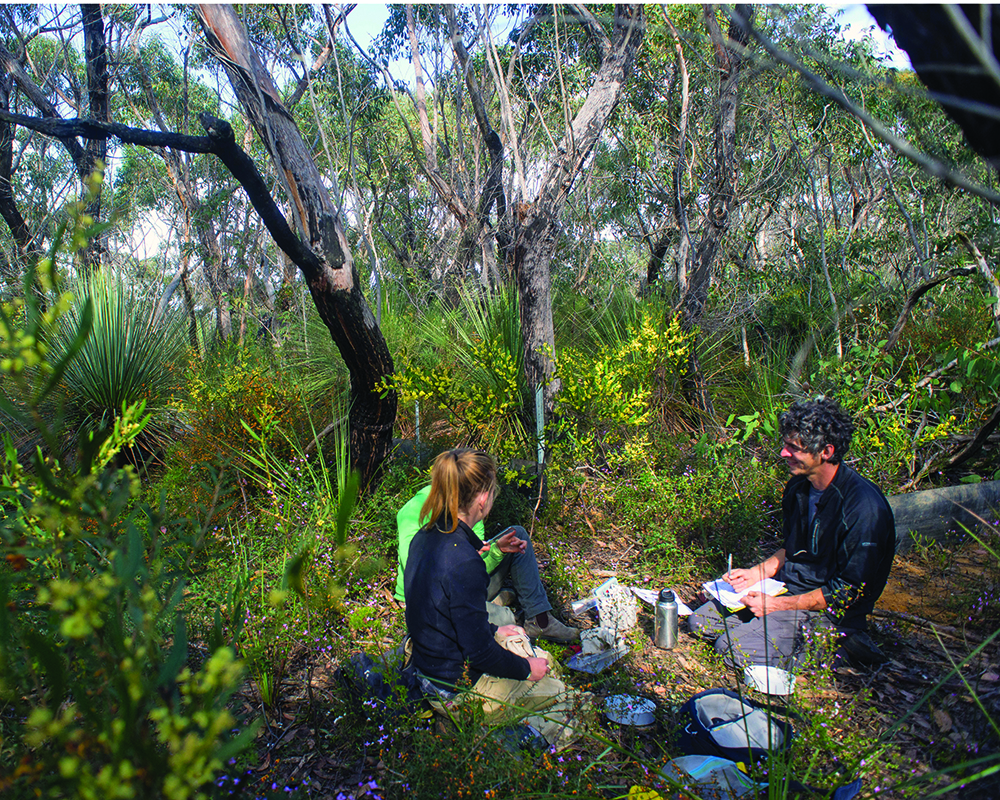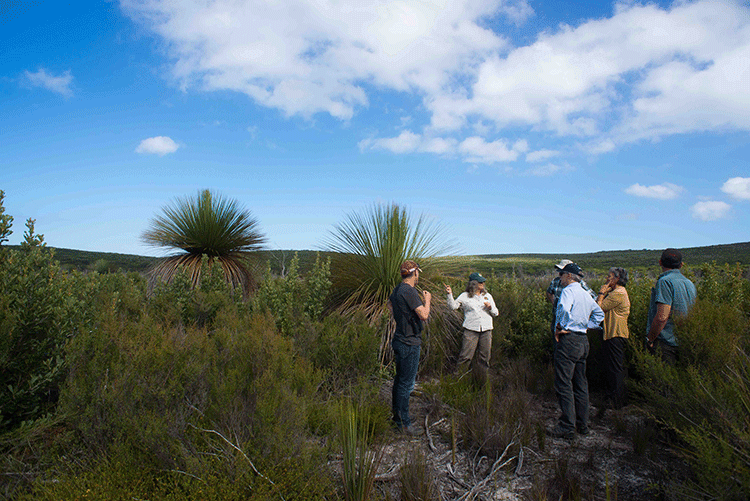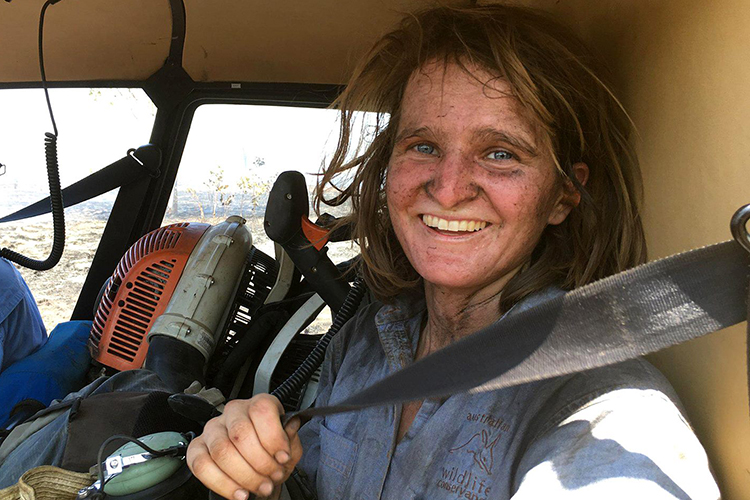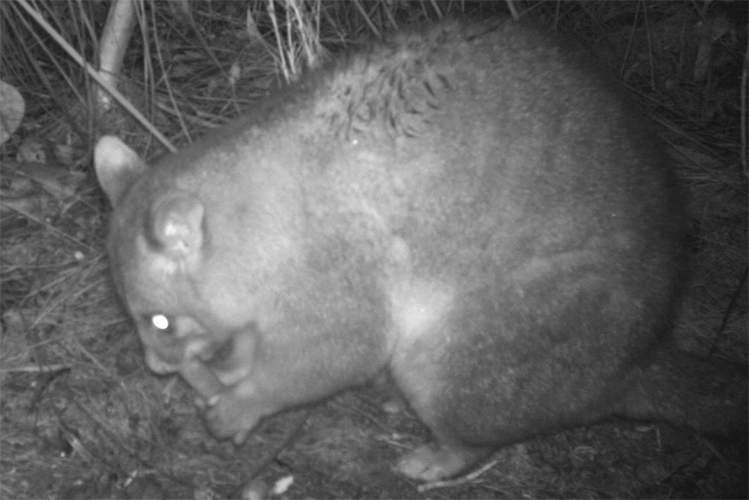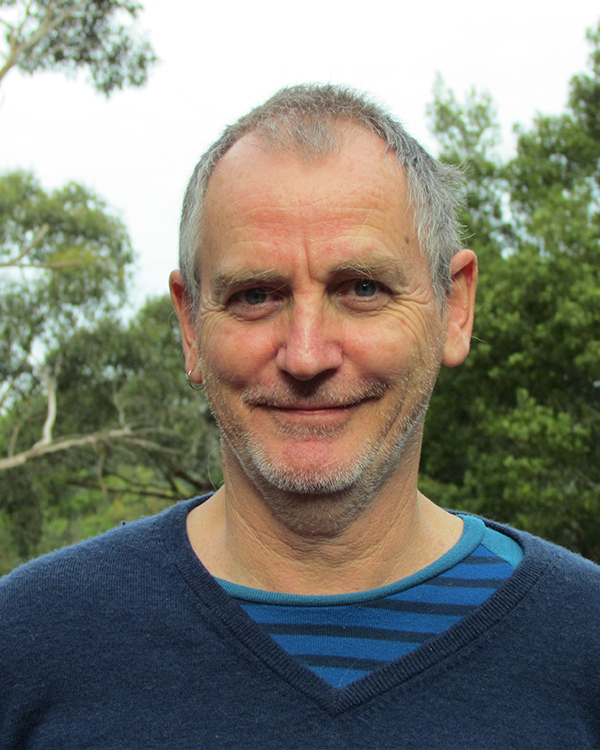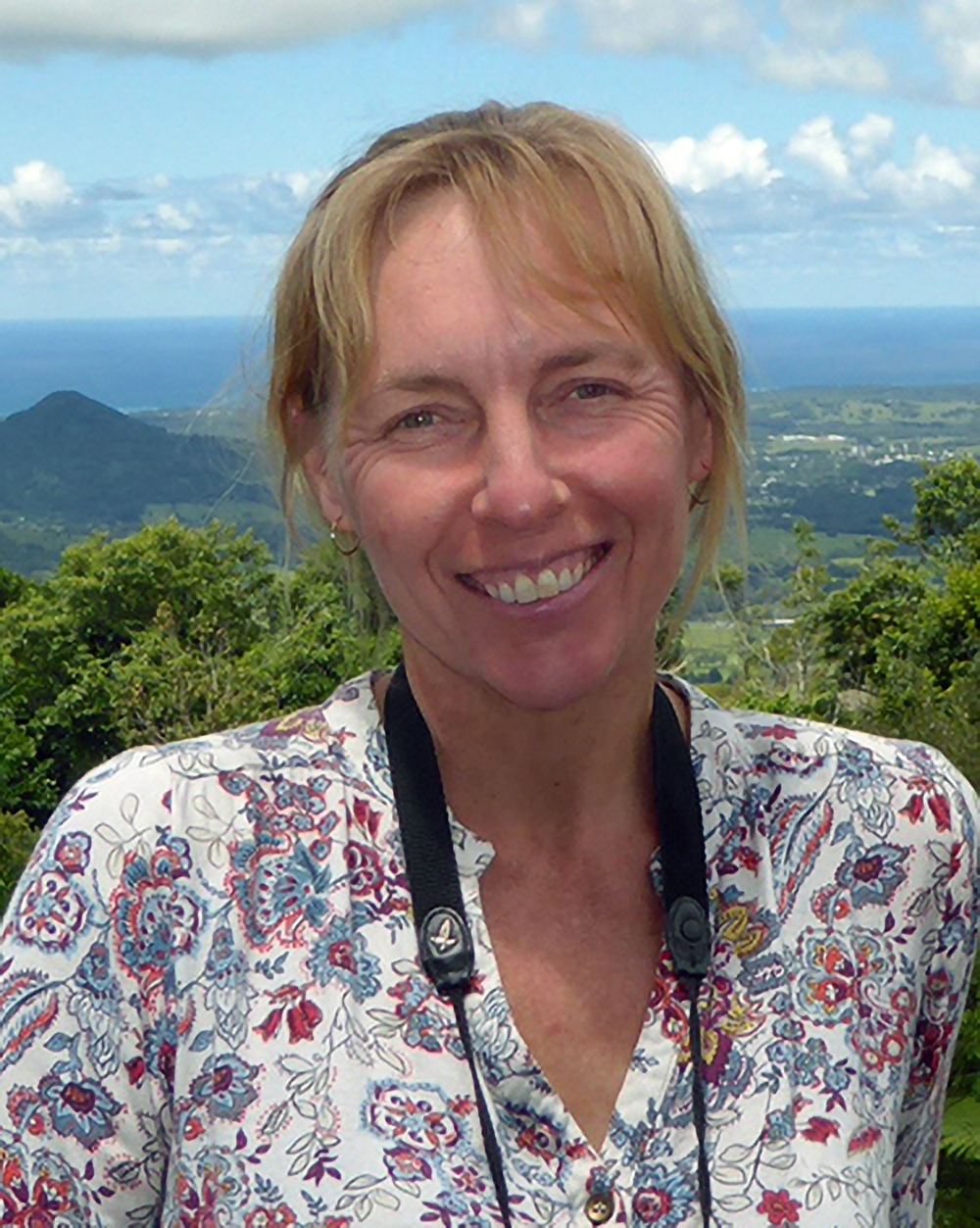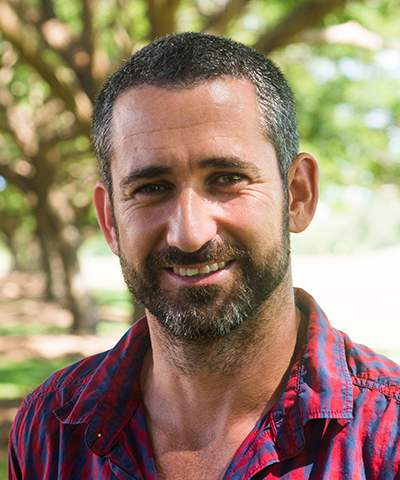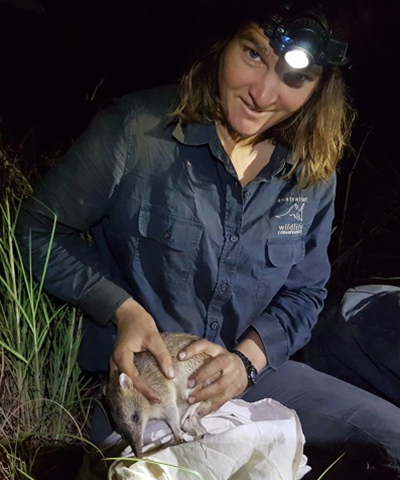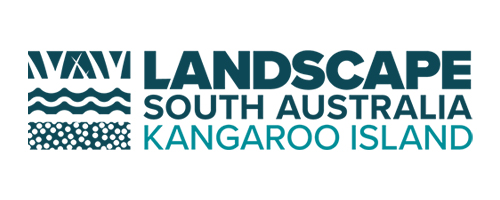
Project: 1.1.10
Response of the Kangaroo Island Dunnart and other threatened species to a cat eradication program
Project Leaders: John Woinarski , Sarah Legge , Brett Murphy , Chris Dickman
Research in Brief
Controlling feral cats on biodiversity-rich islands is a high priority for conservation of Australia’s biodiversity. This project will document the benefits of the proposed Kangaroo Island cat eradication program on the Kangaroo Island dunnart and other threatened species.
As its name implies, the Kangaroo Island dunnart is an endemic species restricted to Kangaroo Island. It is a mouse-sized carnivorous marsupial (a dasyurid) and little is known of its current status, ecology or threats. This project will use a wide range of sampling methods to fill many of these knowledge gaps, and then provide a reporting framework that can be used to assess recovery associated with feral cat control.

The project team and steering committee members met to inspect field sites on Kangaroo Island in April 2017. Photo: Rosemary Hohnen
Why is the research needed?
Islands support much of Australia’s most distinctive biodiversity and many threatened species. However, island species make up a disproportionately large number of the extinctions that have occurred in Australia over the last 200 odd years. Introduced predators are responsible for much of the loss of Australia’s island biodiversity. In response to this, Australia’s Threatened Species Strategy has committed to the eradication of feral cats from five priority islands, and to the recovery of 20 priority threatened mammal and bird species.
The largest of the five islands prioritised for feral cat eradication is Kangaroo Island (KI). At 4416 km2 it is Australia’s third largest island (after Tasmania and Melville Island). The Australian Government has recently committed substantial funding to establish the KI cat eradication program. The eradication program is also supported by the SA government and the KI community in general.
The eradication is expected to benefit many endemic and threatened species on KI, including the Kangaroo Island dunnart, which is one of the 20 priority mammals. There are relatively few records of this dunnart species, to date it has been challenging to sample and its conservation is hampered by lack of knowledge about the species.
The feral cat eradication program is supported by, and will be implemented by, the South Australian Department of Environment, Water and Natural Resources (through Natural Resources Kangaroo Island). Cat management commenced in late 2015, and is likely to continue for at least five years.
Feral cat eradication programs on large islands represent major resource investments. Given this cost, it is appropriate that biodiversity benefits (or other outcomes) arising from eradication programs are appropriately assessed.
How will the research help?
The research project will design and implement a sampling and monitoring program to assess the distribution, abundance, threats and habitat requirements of the Kangaroo Island dunnart and other threatened species.
It will assess the abundance of feral cats in areas with varying abundances of dunnarts, and attempt to measure the response of dunnarts to cat control actions.
Along with other Threatened Species Recovery Hub projects, this will help to develop a substantial evidence base for understanding the responses of biodiversity to the management of feral cats.
The evidence gained on Kangaroo Island will be instrumental to:
- undertake cost-benefit analysis of the Kangaroo Island feral cat eradication program
- inform decisions about eradication programs in other areas, especially other islands
- compare the outcomes of cat eradication with other conservation activities, such as habitat management
The project will also improve detection methods for the elusive Kangaroo Island dunnart and greatly improve knowledge of the species to support its conservation.
What research activities are being undertaken?
The project will focus on the western part of Kangaroo Island where native vegetation has remained most extensive, and where recent (post-1990) records of dunnarts have been reported.
A range of sampling tools (including camera traps and pitfall traps) will be used to help refine the optimum method of detecting this species. A range of habitats and post-fire ages will then be sampled to identify factors that control habitat suitability for the species, and to derive distributional models.
Camera trap arrays will be used to assess the density of feral cats around sites with known Kangaroo Island dunnart populations. If possible, we will then use a range of control approaches to reduce cat abundance at sites, and then monitor the responses of dunnarts (and other native species) to cat control.

Feral cat on Kangaroo Island. Image: Rosemary Hohnen
Who is involved?
The project will work collaboratively with: SA Department of Environment, Water and Natural Resources; Natural Resources Kangaroo Island; and the local community. Natural Resources Kangaroo Island are part of the project’s steering committee.
Research expertise will also be drawn from Charles Darwin University, the Australian National University, the University of Queensland and the University of Sydney.
Where is the research happening?
The research will be conducted across Kangaroo Island, South Australia, with most sampling in the Island’s extensive conservation reserve network.
When is the research happening?
The project will run from 2017 to mid 2019.
More Information
For more information please contact:
Rosie Hohnen - rosemary.hohnen@cdu.edu.au
Top image: Kangaroo Island Dunnart. Photo by Jody Gates.
